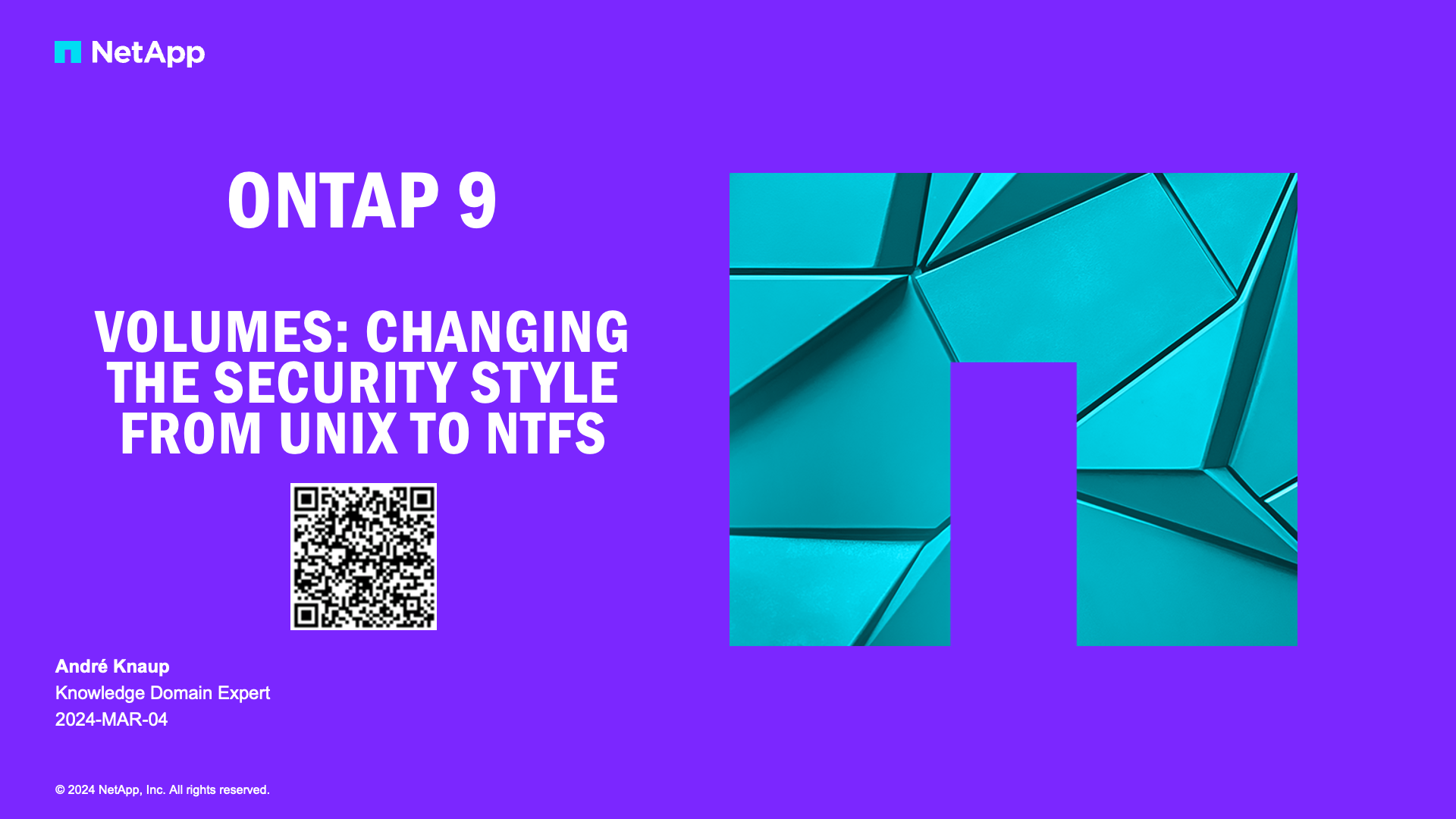ONTAP Hardware
- Home
- :
- ONTAP, AFF, and FAS
- :
- ONTAP Hardware
- :
- Re: Recommented sizing for root volume
ONTAP Hardware
- Subscribe to RSS Feed
- Mark Topic as New
- Mark Topic as Read
- Float this Topic for Current User
- Bookmark
- Subscribe
- Mute
- Printer Friendly Page
- Mark as New
- Bookmark
- Subscribe
- Mute
- Subscribe to RSS Feed
- Permalink
- Report Inappropriate Content
Hi,
I am planning the configuration for my filers. I am doing some research on the recommentation on the root volume sizing. I have 2 approaches now:
1. Create a large 14 disks raid-dp aggregate to host both the root volume and other application volumes.
2. Create a 2 disks raid 4 aggregate to just host the root volume. Create another aggregate for application volumes.
# 2 sounds reasonable as I heard there is administration advantages on separating the root volumes and the application volumes into different aggregate. But at the same time, I find that there is paper (http://www.peripheralstorage.com/NetApp/pdfs/SynchronousSnapMirror.pdf) saying that it's not good idea to configured root aggregate as raid 4 since the number of disk can't provide adequate write performance on snapmirror. Any thoughts?
Thanks,
Jason
- Mark as New
- Bookmark
- Subscribe
- Mute
- Subscribe to RSS Feed
- Permalink
- Report Inappropriate Content
Hi,
we usualy integrate the root volume into the data aggregate on small machines (FAS20X0 and small FAS31x0 configurations) but tend to seperate it on bigger machines (6shelves+, FAS31x0,FAS60x0).
Regarding snapmirror/syncmirror, the root volume doesnt write that much stuff so 2 disks are quite sufficient usualy.
Kind regards
Thomas
- Mark as New
- Bookmark
- Subscribe
- Mute
- Subscribe to RSS Feed
- Permalink
- Report Inappropriate Content
There are some existing post on this that is a good reference. http://communities.netapp.com/message/28177#28177
The issue with a 2 drive root aggregate (raid4) is that you don't get hot upgrades of disk firmware since that requires dual parity. You could add a disk, hot upgrade, remove the dual parity and zero it, but that is a lot of work every time you upgrade firmware.
The recommendation for more than 3 drives (7 drives) for snapmirror is when we are using snapmirror sync/semi-sync where the cplogs and nvlogs get written to the root aggregate and more spindle I/O is needed. It isn't a good idea to run synchronous snapmirror with a small root aggregate. With async snapmirror this is not an issue.
Per the above link you will find detailed discussion and debate on a separate or combined root aggregate. I tend to create separate but when a smaller system I agree it is a big cost not worth the rare risk of aggr failure. However, note the 8.0 64-bit discussion. A root aggregate must be 32-bit. So, if you want all 64-bit large aggregates in 8.0, you will need a separate 32-bit root aggregate.
- Mark as New
- Bookmark
- Subscribe
- Mute
- Subscribe to RSS Feed
- Permalink
- Report Inappropriate Content
The recommendation for more than 3 drives (7 drives) for snapmirror is when we are using snapmirror sync/semi-sync where the cplogs and nvlogs get written to the root aggregate and more spindle I/O is needed.
In current DataONTAP logs a written to aggregate that hosts target volume.


